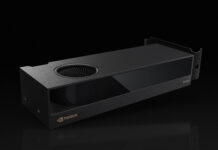Key Specs
Since many of our users are going to want to run different OSes on this, we wanted to give some of the key hardware specs. There is a lot on these machines that are customizable, but this at least gives you some sense of what hardware is available. If you want to know if your hardware is compatible with your OS, this list should help do that tie-out.
CPU Support
Here are the officially supported CPUs for the unit:
- Intel Core i3-6100T (2 Core/ 3 MB/ 4T/ 3.2GHz)
- Intel Core i5-6500T (4 Core/ 6 MB/ 4T/ 2.5GHz)
- Intel Core i5-6600T (4 Core/ 6 MB/ 4T/ 2.7GHz)
- Intel Core i7-6700T (4 Core/ 8 MB/ 8T/ 2.8GHz)
- Intel Core i3-7100T (2 Core/ 3 MB/ 4T/ 3.4GHz)
- Intel Core i3-7300T (2 Core/ 3 MB/ 4T/ 3.5GHz)
- Intel Core i5-7500T (4 Core/ 6 MB/ 4T/ 2.7GHz)
- Intel Core i5-7600T (4 Core/ 6 MB/ 4T/ 2.8GHz)
- Intel Core i7-7700T (4 Core/ 8 MB/ 8T/ 2.9GHz)
RAM Support
- Up to 32GB in 2x DDR4-2400 SODIMMs
Storage Support
- 2.5″ SATA with Bracket
- M.2 PCIe for NVMe SSDs
Networking (Wired)
- Intel i219LM
WiFi Support (Optional)
- Intel Wireless-AC 3168, Wi-Fi + Bluetooth 4.1 combo adapter, 2×2
- Intel 7265 802.11ac wireless with Bluetooth combo adapter 2×2
- Intel 7260 802.11a/b/g/n wireless with Bluetooth combo adapter 2×2
- Intel Wireless-AC 8265, Wi-Fi + Bluetooth 4.1 combo adapter, 2×2 (with or without vPro)
Chipset
- Intel Q270
USB Ports
- 3x USB 3.1 Gen1 Front (2x Type-A, 1x Type-C)
- 4x USB 3.1 Rear Type-A
OSes From Factory
- Windows 10 Home (64-bit)
- Windows 10 Pro (64-bit)
- Windows 7 Pro (64-bit)
- Windows 7 Pro (32-bit)
- FreeDOS
- NeoKylin Linux 64
The OS section can be a big deal. Sometimes the units are advertised as supporting Windows 10, but one gets a Windows 10 Home license. If you want to, or may want to, run Windows 10 Pro, knowing exactly which OS is on the device is ultra important. Having Ubuntu Linux installed from the factory is nice since we know many of our readers will use these with Linux. We also had our system running Proxmox VE as a Linux virtualization node but that is not an officially supported OS.
Also, we will note that our system did have vPro enabled. This requires vPro compatible processors such as the Core i5-7500T, but also vPro to be enabled through a platform like the EliteDesk 800 G3 and components such as the 8265 wireless with vPro. Our recommendation is to look for the vPro sticker if this is a feature you want.
Note: These systems sometimes change specs mid-generation. If you find another spec sheet with items you think we should add, please let us know in the comments.
Next, we are going to look at the performance and power consumption before getting to our final words.




“Still, we wanted to take a look at an AMD Ryzen option the Lenovo ThinkCentre M75q-1 Tiny to see how it performs and how we should rank it in a value system.”
Oops, somebody is using cut&paste and not reading their entire article before posting it. Can’t blame the editor for this one as the Editor isn’t necessarily taking the time to fully comprehend all the content.
Please remove this comment after it’s fixed, lol.
Do you see a possibility to add a second 2.5″ drive? Without the bulky mounting tray there should be enough room. But how to duplicate the single SATA connector?
DO NOT BUY if you need a QUIET Linux system. I bought one of these for the parents after using a G2 at home for many years successfully. This G3 is a mess on Linux. It’s nice & whisper quiet in the bios, but as soon as Linux starts, it’s loud & whiny. It’s not full fan, but it’s quite loud. The only fan related option the bios has is the ability to increase the fan-speed at idle. Once in Linux, pwnconfig and fancontrol fail to run. I spent a couple hours searching for anyone who’d figured out a way to control this fan in Linux, but everyone was met with failure.
This has been a very distressing & saddening experience. DO NOT BUY if you need a QUIET Linux computer. The G2 was way way better.
” DO NOT BUY if you need a QUIET Linux computer. ”
thanks.
rektide , are you tried remove Fan and change heatsink to another ?
FYI: The CPU fan never goes into idle. It’s always slowly spinning and making an annoying high pitched noise. Also there is just no way to control that. All you can do is *increase* the minimum idle speed in the Bios.
Update on the Fan situation: You can just remove it. The passive cooling is actually pretty good. At idle or light load it will just sit there at ~50°C. And even under load it stays in the 70s. And worst case it thermal throttles at 80…